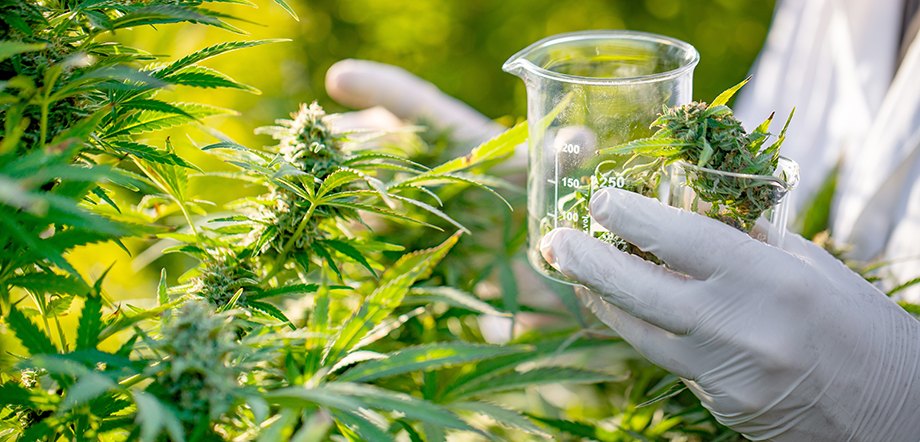Client Alerts
Hemp/CBD Companies: Make Your Voices Heard on USDA and DEA Regulations Restricting Hemp Production
October 2020

Client Alerts
Hemp/CBD Companies: Make Your Voices Heard on USDA and DEA Regulations Restricting Hemp Production
October 2020
The United States Department of Agriculture (USDA) has reopened the public comment period for its interim final rule relating to the “Establishment of a Domestic Hemp Production Program” and invited interested persons and stakeholders to submit written comments in response to the rule. The comment deadline is October 8, 2020.
The Drug Enforcement Administration (DEA) also recently issued an interim final rule on the implementation of the Agriculture Improvement Act (aka the 2018 Farm Bill) and invited comments with a deadline of October 20, 2020.
This Client Alert highlights the main areas of inquiry sought by these governmental agencies and encourages interested persons and industry stakeholders to provide public comment on these proposed final rules to ensure industry and consumer voices are adequately represented and heard.
USDA Interim Final Rule
USDA’s interim final rule regulating domestic hemp production went into effect on October 31, 2019. The provisions raised numerous issues, which led USDA to reopen the comment period to obtain further input on its regulatory requirements. Although USDA has invited comments on any of the provisions of the interim final rule, it specifically requested comment relating to the following:
- Measurement of Uncertainty for Sampling
The interim final rule provides for a measurement of uncertainty (MU) to account for variability in sampling that arises from handling hemp in the laboratory; however, it does not account for variability that could arise from sample collection and handling before hemp arrives at the laboratory. USDA is requesting comments regarding increasing or accounting for additional uncertainty in the sample collection process.
- Liquid Chromatography Factor, 0.877
The liquid chromatograph technique for testing THC levels in cannabis requires the application of a formula to calculate total potential THC. The formula in the interim final rule assigns a value of 87.7% of THCA to be added to the Δ9 THC levels to determine the total THC level. Commenters maintain this computation yields inaccurate test results. USDA is seeking comments relating to the accuracy of this formula and potential alternative factors, including reducing the 87.7% value.
- Disposal and Remediation of Non-compliant Plants
The interim final rule requires destruction of hemp plants that exceed the 0.3% THC threshold. Potential alternative remediation measures that USDA could allow include separating floral materials, rendering plant materials non-consumable or non-ingestible, and removing THC from non-compliant plants. If remediation measures are adopted rather than destruction, it would create substantial cost savings.
- Negligence
The interim final rule stipulates that a producer commits a negligent violation of the Act if its hemp samples have a THC concentration of more than 0.5% THC on a dry weight basis. Three negligent violations will result in producers being barred from producing hemp for a period of five years. This rule arguably unduly punishes parties for negligence based on an arbitrarily chosen 0.5% THC level, which is not readily predictable.
- Interstate Commerce
Due to a lack of uniformity regarding hemp laws across states, potential issues with stopping or delaying legal shipments of hemp-derived products by local law enforcement continue to exist. USDA is seeking comments on whether additional regulations, such as a national standardized documentation requirement, are desirable.
- 15-day Harvest Window
The interim final rule dictates that within 15 days prior to the anticipated harvest authorized persons shall collect samples from flower material of the cannabis plants for Δ9 THC concentration testing; however, the 15-day timeframe has been shown in practice to be too short. USDA is considering extending the harvest window.
- Hemp Seedlings, Microgreens, and Clones
USDA is seeking comments regarding cannabis plants that are not grown to full maturity. As the interim final rule’s sampling and testing requirements are directed toward mature hemp, USDA is considering regulations and licensing relating to immature hemp plants.
- Hemp Breeding and Research
USDA is requesting input relating to whether research facilities should be required to obtain licenses similar to commercial facilities and whether these types of facilities should have certain disposal protocols for non-compliant plants. USDA is also considering exempting research facilities from the sampling and testing requirements.
- Sampling Methodology – Flower vs. Whole Plant
The interim final rule dictates that samples be taken from the flower rather than the whole cannabis plant; however, testing from a specific part of the plant, where cannabinoids are most concentrated, appears to create a threshold lower than 0.3% THC by dry weight volume for hemp versus a higher threshold if the whole plant, including stems, stalks, and seeds, is sampled.
- Sampling Methodology – Homogenous Composition, Frequency, and Volume
Due to the expense and burden of sampling requirements, USDA is considering changing the interim final rule to take into account the differences in varietals, end uses, and sizes of hemp operations.
- Sampling Agents
The interim final rule requires that all hemp be sampled and tested by USDA-approved sampling agents or federal, state, or local law enforcement agents authorized by USDA. USDA is soliciting comments regarding sample agent certification and uniform national training and requirements versus state and tribal certification programs.
- DEA Laboratory Registration
The interim final rule originally required THC content to be tested at laboratories registered with the DEA; however, as DEA-registered testing laboratories are limited in number (currently there are 66 listed on USDA’s website, and several states have no DEA-registered laboratories), this requirement would create substantial delays, making it difficult, if not impossible, for the industry to function. USDA is requesting comments on whether the DEA laboratory registration requirement should be removed and how labs can dispose of “hot” hemp samples in conformance with the Controlled Substances Act.
DEA Interim Final Rule
In its interim final rule, which became effective August 21, 2020, the DEA claims the rule conforms its regulations to the Agriculture Improvement Act of 2018, which removed hemp from the definition of marijuana under the Controlled Substances Act. The DEA’s interim final rule asserts that “a cannabis derivative, extract, or product that exceeds the 0.3% Δ9 THC limit is a schedule I controlled substance, even if the plant from which it was derived contained 0.3% or less Δ9 THC on a dry weight basis.” The DEA’s position creates potential criminal risk for processors of hemp and hemp extracts if any substances created in processing or extraction even temporarily result in levels of THC in excess of 0.3%. In doing so, the interim final rule purports to create additional criminal risks that were neither contemplated nor intended by Congress in passing the Agriculture Improvement Act of 2018.
The interim final rule also raises questions about whether Δ8 THC would be considered an illegal “synthetic” cannabinoid. Because Δ8 THC is a naturally occurring cannabinoid found in small amounts, a chemical process is generally employed to produce it in commercially viable quantities. The interim final rule is ambiguous regarding whether Δ8 THC produced through chemical means would be considered “synthetically derived,” thereby rendering Δ8 THC-containing products potentially illegal. Adding to the confusion, DEA, on its most recent controlled substances list, identifies Δ8 THC, along with THC, Δ9 THC, and dronabinol as “other names” for Tetrahydrocannabinols, which continue to be listed as schedule I controlled substances.
Lawsuit Challenging DEA
On September 18, 2020, the Hemp Industries Association and RE Botanicals filed a petition in the U.S. Court of Appeals for the District of Columbia challenging the DEA’s interim final rule on the grounds that the DEA exceeded its authority and the proposed rule does not comport with the Agriculture Improvement Act of 2018. The petition also alleges that DEA’s Acting Administrator issued the rule without following required legal procedures. We will continue to monitor efforts to challenge DEA efforts to restrict the progress made by the 2018 Farm Bill.
Tucker Ellis attorneys are available to discuss any of your questions relating to USDA’s and DEA’s interim final rules and can assist you in providing written comment to USDA and DEA.
ADDITIONAL INFORMATION
For more information, please contact:
- Edward W. Racek | 213.430.3405 | edward.racek@tuckerellis.com
- Victoria L. Vance | 216.696.3360 | victoria.vance@tuckerellis.com
- Arthur E. Mertes | 312.256.9407 | arthur.mertes@tuckerellis.com
- Sarena M. Holder | 216.696.5696 | sarena.holder@tuckerellis.com
This Client Alert has been prepared by Tucker Ellis LLP for the use of our clients. Although prepared by professionals, it should not be used as a substitute for legal counseling in specific situations. Readers should not act upon the information contained herein without professional guidance.
